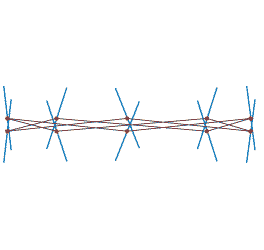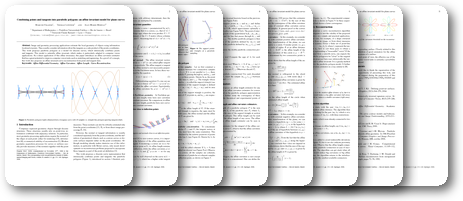
Combining points and tangents into parabolic polygons: an affine invariant model for plane curves
Marcos Craizer, Thomas Lewiner, Jean-Marie Morvan
Journal of Mathematical Imaging and Vision 29(2-3): pp. 131-140 (november 2007)
Selected for publication from the Sibgrapi 2006 conference Check also the technical report Convergence of affine estimators on parabolic polygons.
Selected for publication from the Sibgrapi 2006 conference Check also the technical report Convergence of affine estimators on parabolic polygons.
Abstract:
Image and geometry processing applications estimate the local geometry of objects using information localized at points. They usually consider information about the tangents as a side product of the points coordinates. This work proposes parabolic polygons as a model for discrete curves, which intrinsically combines points and tangents. This model is naturally affine invariant, which makes it particularly adapted to computer vision applications. As a direct application of this affine invariance, this paper introduces an affine curvature estimator that has a great potential to improve computer vision tasks such as matching and registering. As a proof-of-concept, this work also proposes an affine invariant curve reconstruction from point and tangent data.Downloads:
PDF paper (1.3 MB)BibTeX:
@article{parabolic_polygon_jmiv,author = {Marcos Craizer and Thomas Lewiner and Jean-Marie Morvan},
title = {Combining points and tangents into parabolic polygons: an affine invariant model for plane curves},
year = {2007},
month = {november},
journal = {Journal of Mathematical Imaging and Vision},
volume = {29},
number = {2-3},
pages = {131--140},
publisher = {Springer},
doi = {10.1007/s10851-007-0037-2},
url = {\url{http://thomas.lewiner.org/pdfs/parabolic_polygon_jmiv.pdf}}
}
